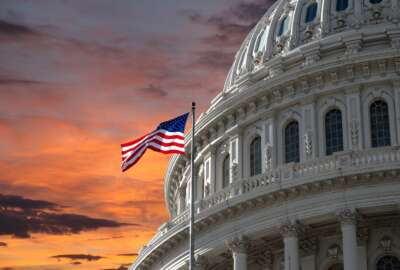‘We don’t always have the right answer:’ Why agency leaders should be more transparent
One way to improve federal employees’ trust? More transparency from agency leaders.
It’s an age-old question: How much does the public trust the federal government?
Countless surveys have asked this — and lot of the results show consistently low scores. But drilling down into a specific group might yield some more telling answers. What about federal workers’ trust in the very institutions that employ them?
If federal employees have more trust at work, they’ll be more engaged and productive, the Partnership for Public Service reported in newly released survey results. The Partnership said there’s one surefire way to improve trust: focus on feds’ perceptions of agency leaders.
It makes sense — leaders are figureheads. They represent the function of an agency. If you trust the person who’s in charge, you’ll be more likely to trust the agency, too.
But the way to improve trust in leadership isn’t so easy to define. A lot of research on trust is qualitative. It’s hard to measure changes in perception.
In its recent research, the Partnership defined trust as “a person’s belief that another person or institution will act consistently with their expectations of positive behavior.” That can be accomplished through several means — things like capability, reliability and humanity.
All of those are important for improving trust, but another crucial piece is transparency. Leaders should be clear about what they can actually accomplish — and be honest when they don’t have the answers.
“From a decision-making perspective, you have to be fair and transparent. We don’t always have the right answer or the best answer or a good answer. But [you should still] say, ‘this is how the decision was derived,’” said Pam Coleman, the Office of Management and Budget’s associate director for performance and personnel management.
Adhir Kackar, a senior leader at the Environmental Protection Agency, added at the Partnership’s event that being as candid and transparent as you can be about why certain decisions are being made will yield better trust from employees.
“[We have to] recognize that sometimes, even as frontline supervisors, we don’t know. Sometimes we’re a bit in the dark as well. If you are transparent with folks, then there’s a level of grace they’re going to give you,” said Kackar, EPA’s director for the federal and state division at the Office of Sustainable Communities.
Many leaders like Coleman and Kackar say transparency is critical for good leadership, but a lot of the points are anecdotal. How exactly do you quantify transparency?
Part of that can come from looking at employees’ input. On the Office of Personnel Management’s 2021 Federal Employee Viewpoint Survey, the question with the most negative responses was: “I believe the results of this survey will be used to make my agency a better place to work.”
The percentage of respondents who agree has hovered in the same ballpark for at least for the last five years. But it has dropped from 43% in 2020. In 2021, only 40% of respondents agreed.
From those numbers, it seems like many federal employees are wary of their leaders actually listening and taking action on what they have to say.
To improve transparency, the Partnership recommended more communication. Leaders dedicate more time to engage openly with staff at all levels — a practice that some leaders, like Coleman, already implement.
“When I first get to a new position, I hold a one-on-one with everybody. That’s for everybody, from my deputy to the interns,” she said. “Everybody is going to get time because I want to know what they think. Everyone has something to contribute.”
Having that level of transparency between leaders and employees will contribute to better trust, higher quality work and more work satisfaction, the Partnership said.
And the Partnership certainly isn’t the only place calling for more transparency from leaders. On Capitol Hill, bipartisan House lawmakers want agency heads to be more transparent with the public about their actions.
Reps. Don Beyer (D-Va.) and Chip Roy (R-Texas) introduced legislation that would require agencies to publicly share copies of their schedules and speeches. In the Transparent Leadership Act, agencies would have 30 days to publish information about meetings and events that they lead.
Although the legislation is public-facing rather than looking internally at federal employees, it still calls on those leaders to be held accountable.
“It is extremely important to have transparency about who is in a position to influence key policymakers at meetings and events,” Beyer wrote in a press release. “This information is a crucial safeguard to establish that public servants are serving the interests of the public and abiding by ethics requirements.”
Previous research from the Partnership for Public Service showed that just four in 10 people trust the federal government to do what’s right. But, the scores were higher when the survey asked respondents how they perceived the work of individual civil servants.
If federal employees are the key to improving overall trust in government, then should leaders first prioritize improving trust for those workers themselves?
Do you agree that transparency is important to good leadership? What else do you think makes a good leader? Send your comments to fnncomment@federalnewsnetwork.com.
Nearly Useless Factoid
Hot Springs National Park in Arkansas is the smallest national park. It is about 5,500 acres.
Source: Outdoor Project
Copyright © 2024 Federal News Network. All rights reserved. This website is not intended for users located within the European Economic Area.
Drew Friedman is a workforce, pay and benefits reporter for Federal News Network.
Follow @dfriedmanWFED




